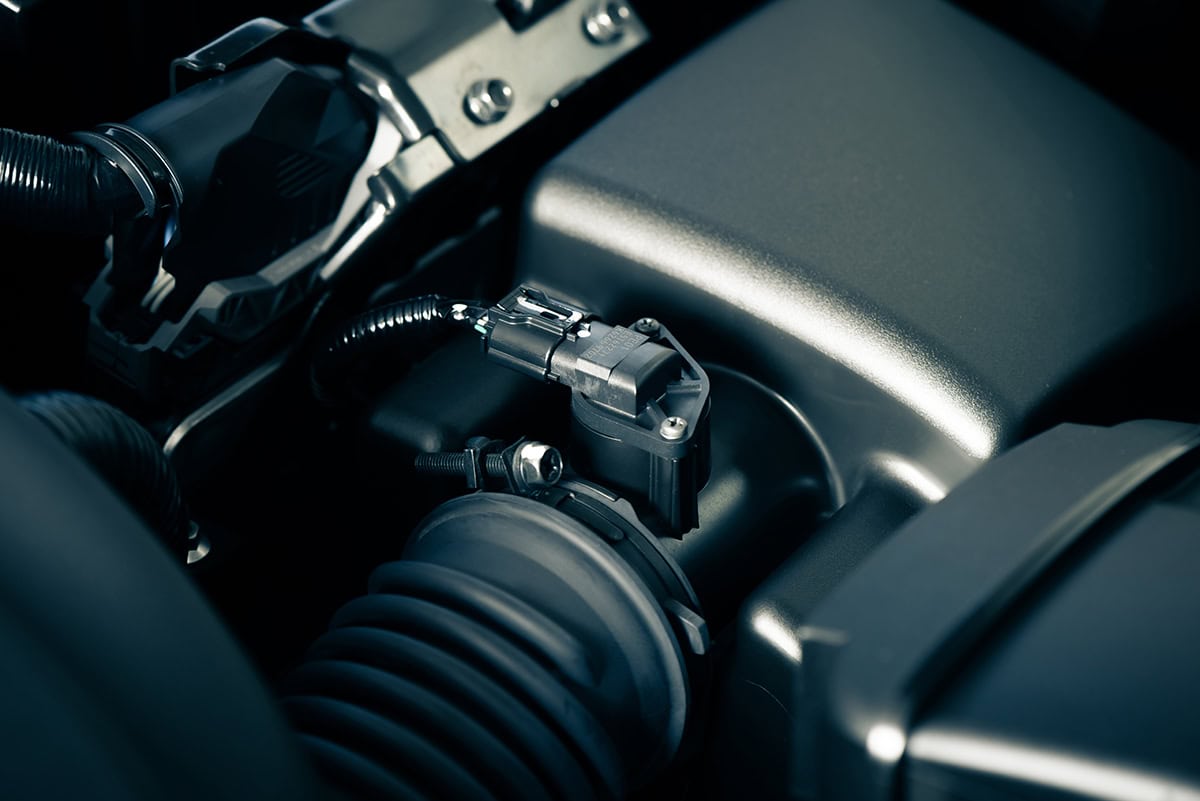The mass airflow sensor (MAF) measures the volume and density of the air entering the engine, providing this information to the car’s computer system. The computer uses this information to delivery an accurate amount of fuel to the engine. When the MAF sensor malfunctions, it can cause various noticeable symptoms and hinder the overall performance of your vehicle.
Common symptoms of a faulty mass airflow sensor include:
- Uneven idling or stalling
- Reduced fuel efficiency
- Loss of power or difficulty in starting the engine
- Check engine light turning on
This article delves into the world of mass airflow sensors, discussing how they work, the symptoms and diagnosis of a faulty MAF, and potential solutions.
A Brief Intro to the Mass Airflow Sensor

The mass airflow sensor (MAF) is a critical component in modern vehicles, especially those with fuel injection systems. The MAF sensor’s primary function is to measure the amount of air entering the engine at any given moment and relay this data to the vehicle’s computer system, commonly referred to as the engine control unit (ECU).
How Does a Mass Airflow Sensor Work?
The MAF sensor operates on a relatively straightforward principle. When the engine runs, air is sucked into the engine compartment. As this air flows past the sensor, it cools a heated wire or film (depending on the sensor type), changing its electrical resistance.
By measuring this resistance, the sensor can calculate the mass of the air flowing into the engine. This measurement is then sent to the ECU, which uses the information to determine the correct amount of fuel to inject into the engine for optimal combustion.
Role of Mass Airflow Sensor in Engine Control Unit (ECU)
The ECU serves as the vehicle’s brain, making essential decisions based on the data it receives from various sensors, including the MAF. The MAF sensor’s readings enable the ECU to maintain the correct air-fuel ratio for combustion.
This ratio, approximately 14.7 parts air to 1 part fuel, is crucial for effective and clean combustion. If the MAF sensor provides incorrect data (due to damage or malfunction), it could lead to a suboptimal air-fuel mixture, affecting engine performance and fuel efficiency. In extreme cases, it could even lead to engine damage.
Indications of a Faulty Mass Airflow Sensor
When the MAF sensor is not functioning correctly, it can lead to several symptoms that, if promptly addressed, can save you from costly repairs down the line.
1. Uneven Idling or Stalling
One of the earliest signs of a faulty MAF sensor is erratic idling. When the MAF sensor malfunctions, it sends incorrect air mass readings to the ECU. The ECU, depending on these readings to calculate the correct air-fuel mixture, may end up injecting either too much or too little fuel, causing the engine to idle unevenly.
This erratic idling can further lead to stalling, particularly when the vehicle is at a stop. A faulty MAF sensor might not accurately measure the decrease in airflow when the throttle is closed, leading to a lean (too much air, not enough fuel) or rich (too much fuel, not enough air) mixture. This imbalance can cause the engine to stall.
2. Reduced Fuel Efficiency
When the MAF sensor sends inaccurate airflow readings to the ECU, it can disrupt the optimal air-fuel ratio necessary for efficient combustion. An excessively rich mixture will lead to unburnt fuel exiting the engine as exhaust, while a lean mixture can cause the engine to work harder, both of which result in poor fuel economy.
3. Loss of Power or Difficulty in Starting the Engine
Power loss can be felt during acceleration, especially when trying to overtake or climb an incline. This symptom is due to the ECU not receiving accurate air intake data and, therefore, not providing the correct fuel amount for maximum power.
Starting the engine might also become more challenging with a faulty MAF sensor. If the sensor is unable to correctly read the mass of air at startup, the ECU may inject too much or too little fuel, causing hard starts or excessive cranking before the engine starts.
4. Check Engine Light is Turning On
When the ECU receives data from the MAF sensor that’s outside of the expected parameters, it can trigger this warning light. A scan tool can be used to check for MAF-related error codes, further confirming a potential MAF sensor issue.
Diagnosing a Faulty Mass Airflow Sensor

Once you’ve identified the symptoms of a MAF, the next step is to accurately diagnose the problem. This process involves several stages, ranging from simple visual inspection to advanced diagnostic methods using specialized tools.
Physical Signs of MAF Failure
Start by locating the MAF sensor, usually found in the air intake duct between the air filter box and the throttle body. Look for any visible signs of damage to the sensor or its wires, such as cracks, frayed wires, or a heavily dirty sensor element.
Utilizing On-board Diagnostic (OBD) Systems
For a more precise diagnosis, you can use an on-board diagnostic (OBD) scan tool. When the check engine light is on, it typically means the engine control unit (ECU) has registered an error code related to a specific component or system in the vehicle.
By connecting an OBD scan tool to your vehicle, you can read these error codes. Codes starting with P0100 to P0104 are often related to the MAF sensor. These codes can indicate whether the sensor circuit is malfunctioning, reading too high or too low, or if there’s an intermittent problem.
Professional Diagnosis
If you’re uncomfortable doing the diagnosis yourself or if the issue remains unresolved, consider taking your vehicle to an auto repair shop. Automotive technicians can perform more advanced diagnostic tests, such as live data scans, that can provide a comprehensive understanding of what’s happening with the MAF sensor and other related systems in real time.
Solutions for a Faulty Mass Airflow Sensor
When dealing with a faulty MAF, there are a few possible solutions, depending on the nature and severity of the fault. The two most common strategies are cleaning the sensor and replacing it entirely.
Cleaning the Mass Airflow Sensor
If your vehicle is exhibiting symptoms of a faulty MAF sensor, and you’ve diagnosed the problem as likely being a dirty sensor, cleaning can be your first course of action. Cleaning the MAF sensor is a less invasive and more cost-effective solution than replacing it outright. It might be all that’s needed to restore your sensor’s function.
To clean the sensor, you’ll need a product specifically designed for this purpose, known as a mass airflow sensor cleaner. Remove the sensor from the vehicle (typically a simple process requiring a screwdriver), spray it with the cleaner, and then let it dry completely before reinstalling. Avoid physically touching the delicate sensor elements.
Replacing the Mass Airflow Sensor
A faulty MAF sensor can cause a wide range of issues, from reduced fuel efficiency to potential engine damage. Replacing the sensor ensures accurate air mass readings, restoring engine performance and fuel efficiency. Replacement is necessary if cleaning doesn’t rectify the issue, if the sensor has a broken component, or if the sensor is old and has become unreliable.
The process of replacing a MAF sensor is usually straightforward. The sensor is typically housed in an easy-to-reach location and held in place by a couple of screws. After removing these, you can disconnect the sensor’s wiring harness and remove the sensor. Installation of the new sensor is the reverse of removal.






